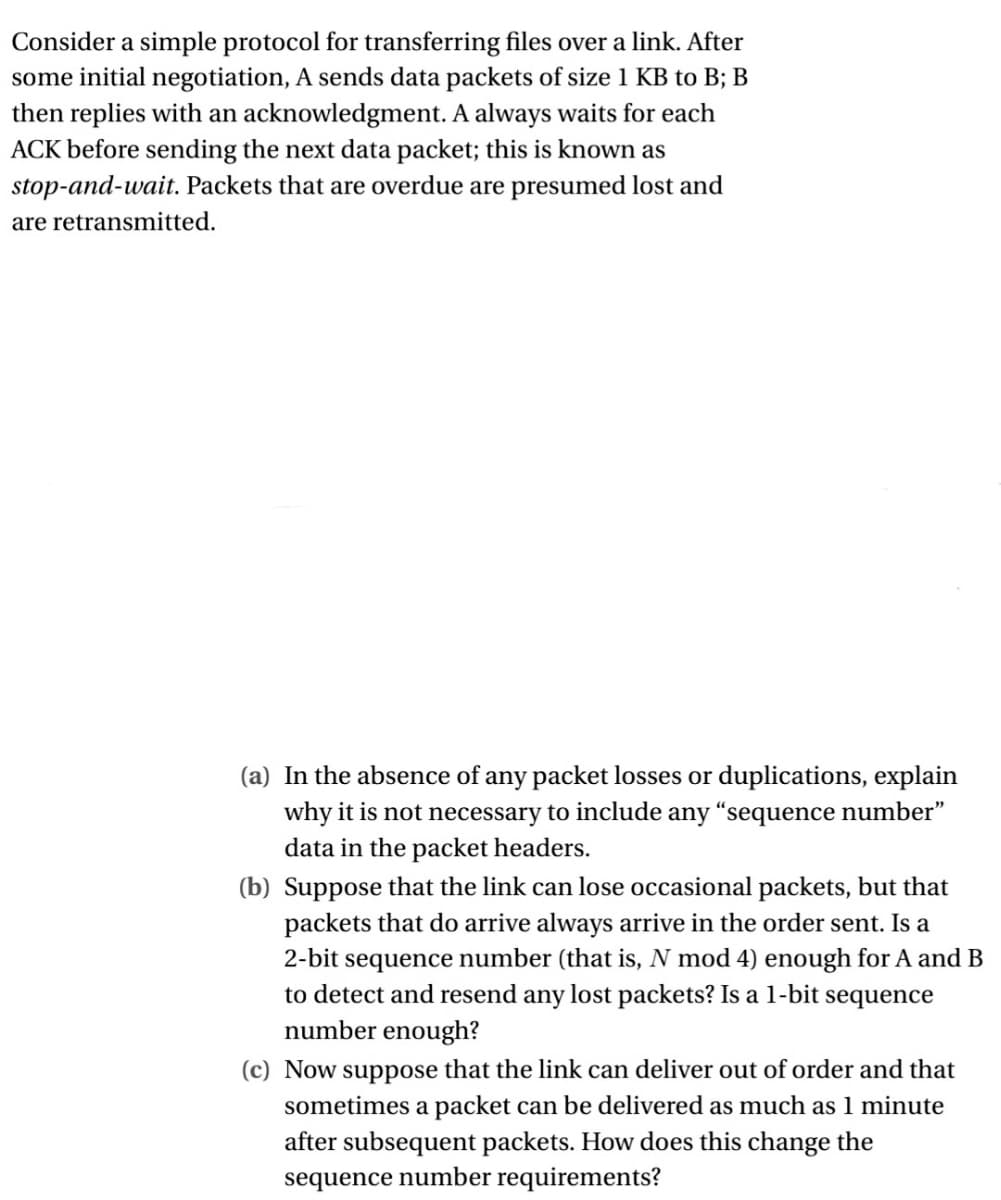Consider a simple protocol for transferring files over a link. After some initial negotiation, A sends data packets of size 1 KB to B; B then replies with an acknowledgment. A always waits for each ACK before sending the next data packet; this is known as stop-and-wait. Packets that are overdue are presumed lost and are retransmitted.
Consider a simple protocol for transferring files over a link. After some initial negotiation, A sends data packets of size 1 KB to B; B then replies with an acknowledgment. A always waits for each ACK before sending the next data packet; this is known as stop-and-wait. Packets that are overdue are presumed lost and are retransmitted.
Principles of Information Security (MindTap Course List)
6th Edition
ISBN:9781337102063
Author:Michael E. Whitman, Herbert J. Mattord
Publisher:Michael E. Whitman, Herbert J. Mattord
Chapter6: Security Technology: Access Controls, Firewalls, And Vpns
Section: Chapter Questions
Problem 2RQ
Related questions
Question

Transcribed Image Text:Consider a simple protocol for transferring files over a link. After
some initial negotiation, A sends data packets of size 1 KB to B; B
then replies with an acknowledgment. A always waits for each
ACK before sending the next data packet; this is known as
stop-and-wait. Packets that are overdue are presumed lost and
are retransmitted.
(a) In the absence of any packet losses or duplications, explain
why it is not necessary to include any "sequence number"
data in the packet headers.
(b) Suppose that the link can lose occasional packets, but that
packets that do arrive always arrive in the order sent. Is a
2-bit sequence number (that is, N mod 4) enough for A and B
to detect and resend any lost packets? Is a 1-bit sequence
number enough?
(c) Now suppose that the link can deliver out of order and that
sometimes a packet can be delivered as much as 1 minute
after subsequent packets. How does this change the
sequence number requirements?
Expert Solution
This question has been solved!
Explore an expertly crafted, step-by-step solution for a thorough understanding of key concepts.
This is a popular solution!
Trending now
This is a popular solution!
Step by step
Solved in 2 steps

Knowledge Booster
Learn more about
Need a deep-dive on the concept behind this application? Look no further. Learn more about this topic, computer-science and related others by exploring similar questions and additional content below.Recommended textbooks for you

Principles of Information Security (MindTap Cours…
Computer Science
ISBN:
9781337102063
Author:
Michael E. Whitman, Herbert J. Mattord
Publisher:
Cengage Learning

Principles of Information Security (MindTap Cours…
Computer Science
ISBN:
9781337102063
Author:
Michael E. Whitman, Herbert J. Mattord
Publisher:
Cengage Learning